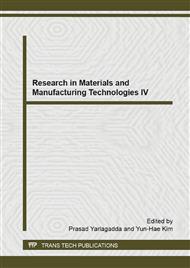p.315
p.319
p.324
p.328
p.333
p.337
p.342
p.351
p.355
Resistive Switching Behavior in Pt/La0.7Sr0.3MnO3/Nb0.05Bi0.95FeO3/Nb:SrTiO3 Ferroelectric Heterostructure
Abstract:
we report reproducible resistive switching performance and relevant physical mechanism of Pt/La0.7Sr0.3MnO3/Nb0.05Bi0.95FeO3/Nb:SrTiO3 ferroelectric heterostructure which was fabricated by pulsed laser deposition. This device exhibits a nonvolatile resistive switching with a resistance ratio of up to 60 under 2V/-3V pulse voltages at room temperature. Low voltage readout, reliable resistance switching reproducibility and good time retention, indicating promise for non-destructive readout nonvolatile memories. In this metal/p-semiconductor/ferroelectric/n-semiconductor heterostructure, the mechanism of resistive switching behavior would be attributed to the ferroelectric polarization enhanced field-induced charge redistribution at the semiconductor/ferroelectric interface, resulting in the modulation of the interface barrier height. Keywords: Resistive switching, Ferroelectric resistive switching, Ferroelectric field effect.
Info:
Periodical:
Pages:
333-336
Citation:
Online since:
December 2014
Authors:
Price:
Сopyright:
© 2015 Trans Tech Publications Ltd. All Rights Reserved
Share:
Citation:


